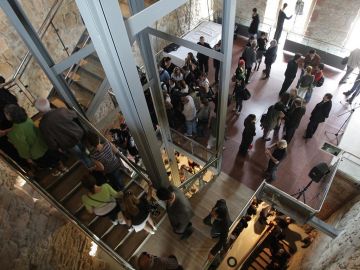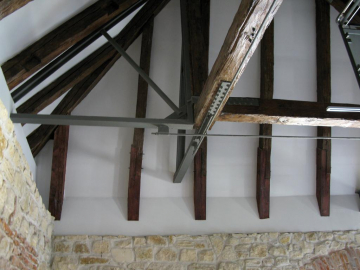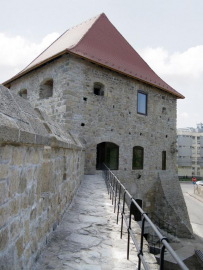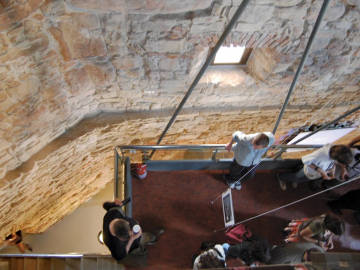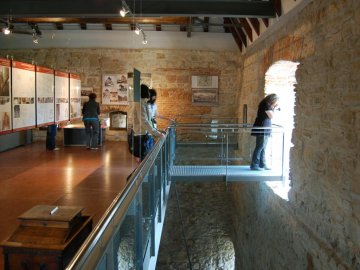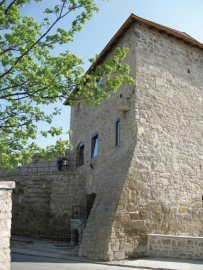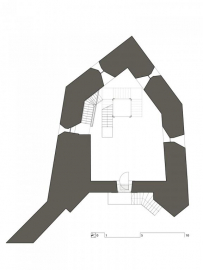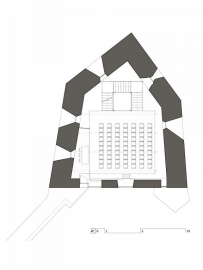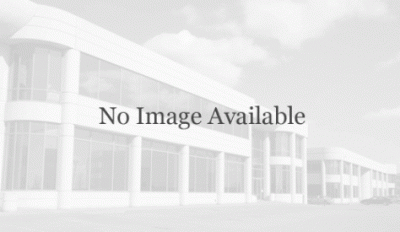Cluj Urban Cultural Center - The Taylor s Tower
Cluj Urban Cultural Center. Rehabilitation and renovation of the Tailors Tower, a historical
monument reintegrated into the citys cultural and touristic route
The Tailors Tower, historically documented from 1475, is the most important fragment that remained after the major demolitions suffered by the medieval fortification of Cluj in the nineteenth century. At the beginning of the rehabilitation project, the heritage building was found in a critical state, seriously affected by the interventions of the twentieth century, when the interior wooden structures were exchanged with a concrete structure, thus altering the spatial organization. The monument was then forgotten for almost 40 years.
The concept of the buildings rehabilitation, which involved establishing here a Cultural Center run by the Transylvanian Branch of the Romanian Chamber of Architects (as initiators of the project), has been proposed and developed between 2005 - 2008. The project envisioned the use of the inside volume (that resulted after demolishing the reinforced concrete elements), for building a modern steel structure that is independent and reversible (the house-in-house system).
The lack of any remaining original interior elements determined the context in which this type of approach was rendered impossible. Thus, the new object became the physical frame for all the planned activities: the foyer, meeting and exhibition spaces downstairs, the conference / multifunctional spaces on the first floor, a specialized library on the second, a logistics center right under the roof structure and a cafeteria in the basement. The challenge of the project was to solve the relation between the two entities that were to start an abrupt dialogue: the historical substance and the modern object.
The existing historical substance has been preserved and restored as such, and now it is present as raw in the architectural image of the whole. The design of the new object has been addressed in a quite provocative way, aiming to open spectacular interior perspectives in their downward component - upwards, revolving ones, that emphasize the space.
The restoration has been accomplished with traditional materials and techniques, while the innovatory elements are contemporary; changing the statical system of the roof structure with reinforcing steel components, demolishing the concrete elements of the structure that was added in the 1970 s (beams, slabs, stairs) and connecting the modern structure to the historical are also a structural engineering performance. The electrical and heating systems have been carefully concealed: the first is hidden in the stone facing, the latter under the flooring of the ground-floor and in the structure of the balustrades.

